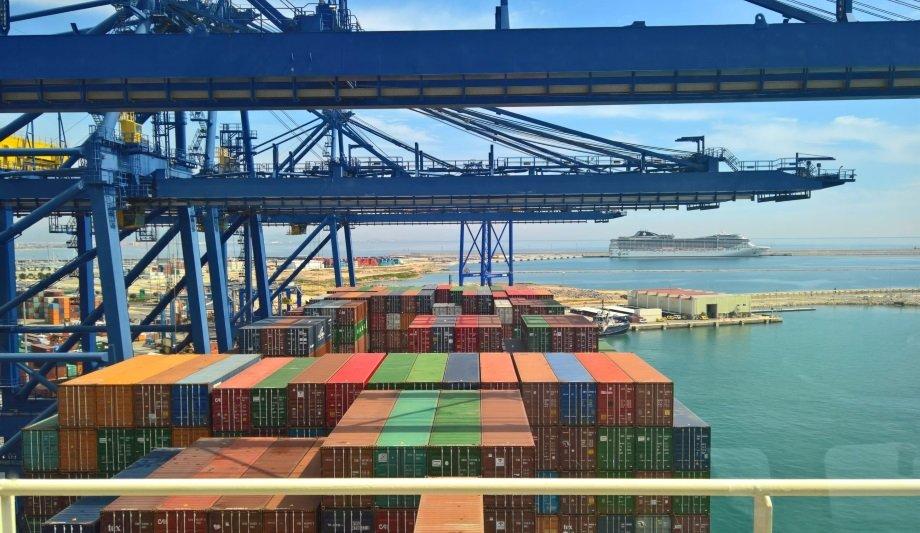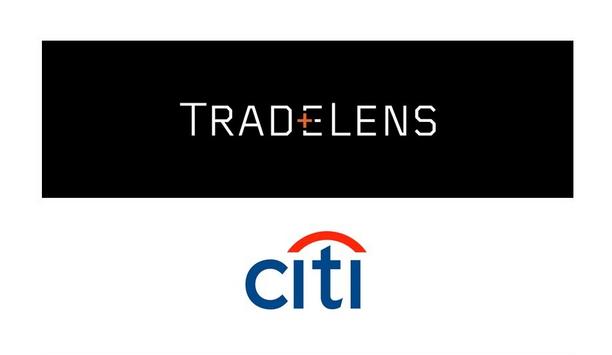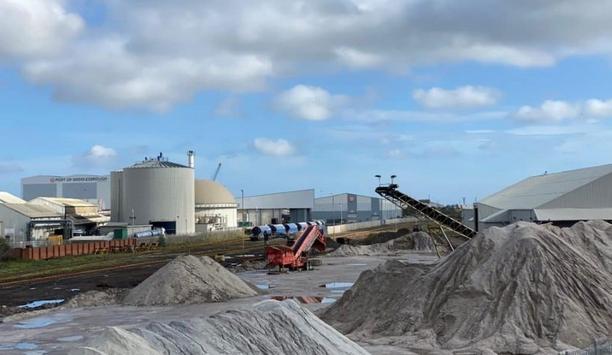The traffic indicators recorded during the month of August at the Port of Valencia have once again acted as a precise thermometer of the state of international trade, of the turmoil in the fuel, solid bulk (cereals), and liquid bulk (Liquefied Natural Gas and oil) markets, as well as the world of containers (import/export of manufactured goods) and tourism.
In August, Valenciaport’s terminals recorded new drops in transhipment traffic, but registered historic records in import containers, in solid and liquid bulk, and in cruise passengers.
Full recovery of cruise tourism
During the month of August, Valenciaport has registered two milestones in August according to the data collected by the Statistical Bulletin of the Port Authority of Valencia (PAV). The figures endorse the pull of imports, which this month has left a total of 86,463 containers unloaded at the docks of Valenciaport, which is 21.45% more than in August 2021, and the full recovery of cruise tourism with the arrival of 103,385 passengers this month.
Valenciaport has registered two milestones in August according to the data collected by the Statistical Bulletin
Total traffic recorded a drop of 5.24% and containers a fall of 1.61%. Of these, full containers fell by 5.19%, mainly due to the decrease in those dedicated to transit (-15.9%) and to a lesser extent to exports (-2.71%). On the other hand, as already mentioned, import containers rose by 21.45% and empty containers by 9.78%.
Increase in unloading containers
The dynamism of import containers is also evident in the cumulative figure from January to August with an increase of 9.77%. In a year marked by geopolitical complexity, the port enclosures are conditioned by the fluctuation and ups and downs in international trade.
Thus, according to data from the PAV’s Statistical Bulletin for the first eight months of the year, 55.48 million tonnes of goods have been moved through Valenciaport’s docks, with a decrease of 2.74%. The number of containers between January and August was 3,545,220, a decrease of 6.22% despite the increase in unloading containers. Full TEUs (standard 20-foot containers of 6.1 metres in length) dedicated to cargo recorded a drop of 6.23%. The leakage of transit containers continues, down by more than 220,000 units between January and August this year compared with the same period in 2021, i.e. -13.1%, while empty containers fell by 2.54%.
Decrease in transhipment shows
This decrease in transhipment shows that the Port of Valencia is at more than 80% of its occupancy rate
This decrease in transhipment shows that the Port of Valencia is at more than 80% of its occupancy rate and on some peak days there are diseconomies of scale which cause shipping lines to look for other ports in the western Mediterranean for these containers. In other words, the Port of Valencia is becoming too small.
And taking the full year as a reference, i.e. September 2021-August 2022 with the same period of the previous year, the figures show that the total of goods has been more than 83.3 million tonnes with a fall of 3.07%. The number of containers was 5,369,221, a decrease of 6.3%.
Of these, the number of import containers reached 890,291 TEUs, an increase of 12.88% compared to the same period the previous year, and an all-time record which highlights the importance of purchases of goods and services both for consumers who have access to more products and for Spanish companies to access components and machinery to continue production.
Pre-pandemic figures
The PAV data also show the recovery of passenger transport after some complicated years
In contrast to the growth in the number of import TEUs, there was a drop of 3.95% in the number of TEUs dedicated to exports and a decrease of 14.54% in transhipment TEUs. From the data in the PAV’s Statistical Bulletin, it can be seen that all the indicators point to the resistance of the Spanish domestic market not to be carried away by the economic pessimism already present in some sectors and in some economic areas of the planet.
The PAV data also show the recovery of passenger transport after some complicated years marked by the COVID-19 pandemic. The Valenciaport docks have received 899,870 passengers between January and August of this year, an increase of 143%. Of these, more than a third of the total, 352,646 are cruise passengers, a figure that is close to the pre-pandemic figures, and the rest, 547,224 are passengers coming or going to or from the Balearic Islands.
Commitment of the shipping companies
As mentioned above, a total of 103,385 passengers have docked in Valencia in August, setting a record for the number of tourists arriving in the city in a single month, the result of the commitment of the shipping companies to a safe destination, which is committed to experiences and excursions in Valencia and the rest of the province.
During the first eight months of the year, ro-ro traffic grew by 0.85%
During the first eight months of the year, ro-ro traffic (goods moved on ships carrying roll-on/roll-off cargo such as lorries or vehicles) grew by 0.85% and accumulated 8,805,262 tonnes. The number of Intermodal Transport Units (ITU) increased by 7.14%.
Non-containerised goods
The number of cars handled from Valenciaport terminals in the first eight months of the year stood at 384,880 units, which represents a growth of 17.66% compared to the same period in 2021. This vehicle traffic is mainly with Italy, Belgium, and Turkey, which account for 50% of the operations.
If users analyse the total traffic by form of presentation, according to the APV Statistical Bulletin, liquid bulk increased by 75.43%, solid bulk by 11.72%, non-containerised goods increased by 2.05%, while containerised goods fell by 8.15%. About the sectors, as in previous months, it is worth highlighting the traffics of the energy sector, especially natural gas, which has mobilised 2,668,766 tonnes of this energy source, 160% more than January-August 2021. Nearly 70% of natural gas imports arriving at the Port of Sagunto come from the United States, followed by Nigeria and Egypt.
Agri-food industry
The general trend in recent months has been a fall in exports in most sectors and an increase in imports
Vehicles and transport elements have increased sales abroad by 1.63%, with automobiles and their parts standing out with an increase of 8.79%. Other sub-sectors of the agri-food industry also grew, such as canned food by 14.28%, animal feed and fodder by 12.64% and oils and fats by 8.54%. The general trend in recent months has been a fall in exports in most sectors and an increase in imports.
By countries, by total freight traffic, the United States continues to lead trade relations with Valenciaport with a total of 6,226,143 tonnes mobilised, which is 21.81% more than in January-August 2021. It is worth highlighting the increase in imports, which have doubled due to the growth of natural gas arriving from the North American country. This was followed by Italy with 5,166,903 tonnes, a similar figure to the previous year.
Highest growth rates
The transalpine country continues to be ahead of China, with the Asian giant mobilising 4,334,492 tonnes, a drop of 6.33%. The highest growth rates are in the United Kingdom with a rise of 64.22%, the Netherlands (+35.05%), Romania (+22.12%), and Nigeria (+20.66%).
In terms of the number of TEUs handled, China has 381,451 containers with import/export products, but still shows a decrease of 6.18% compared to the first eight months of the previous year. China is followed by the United States with 351,001 containers (-3.49%) and Turkey with 175,138 (-17%). The most dynamic countries were the United Kingdom (+60%), Vietnam (+32.43%), and Greece (+15.78%).










